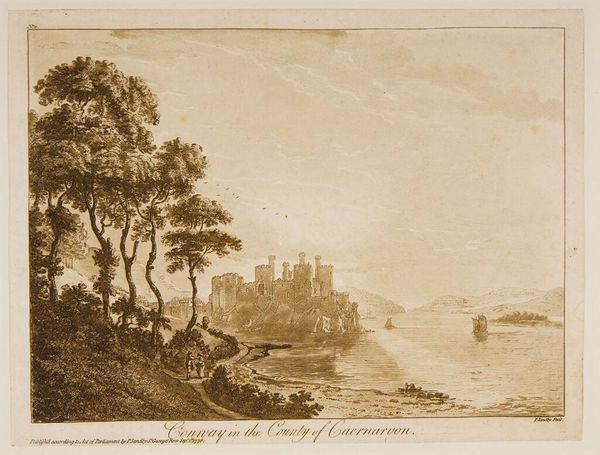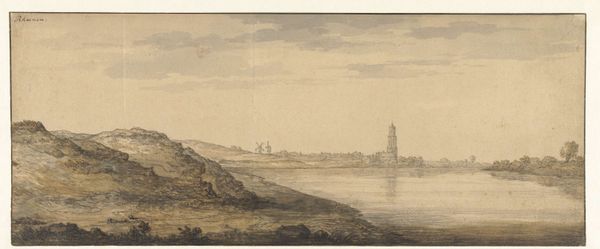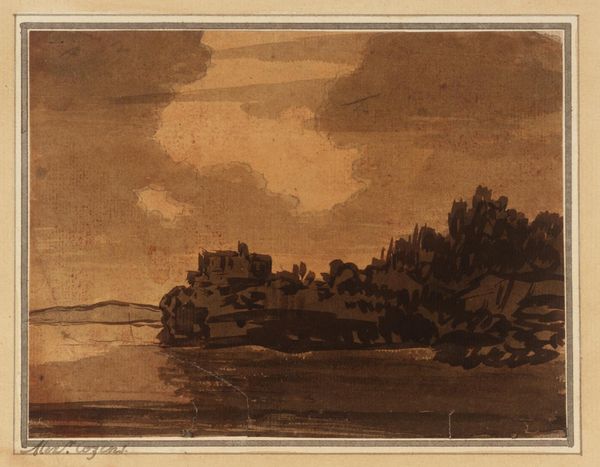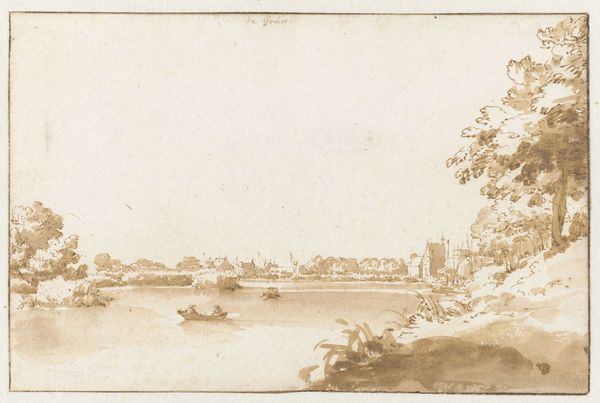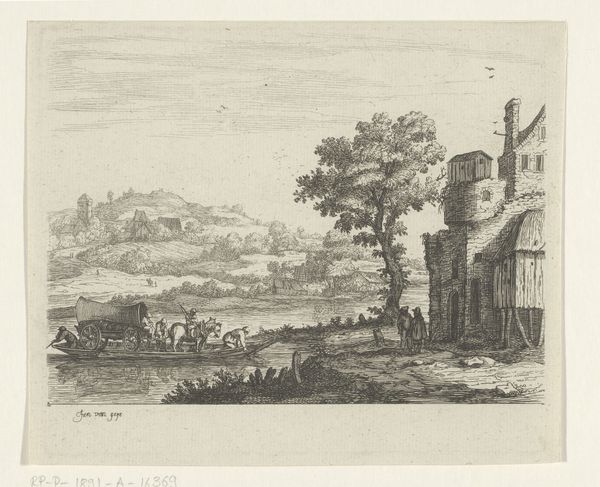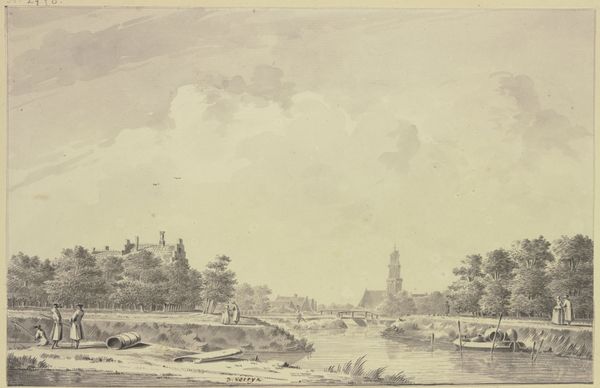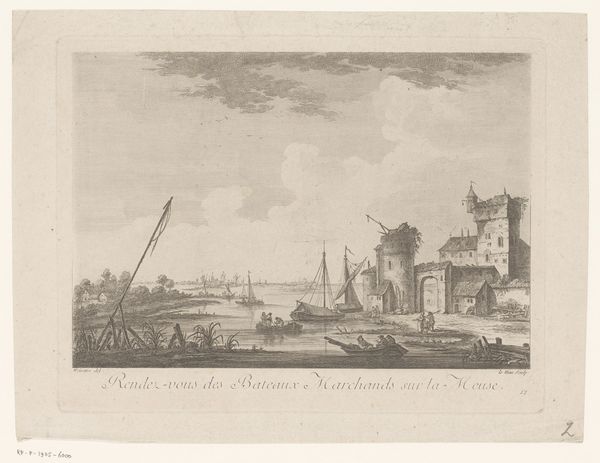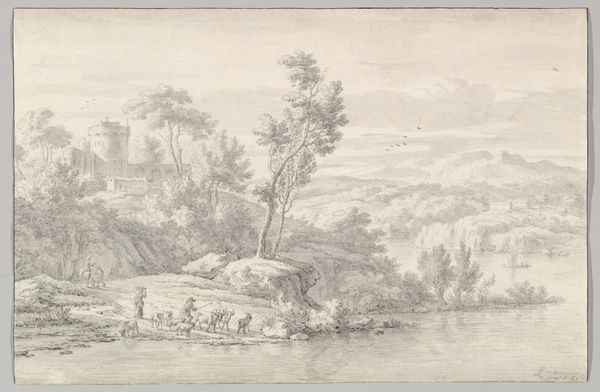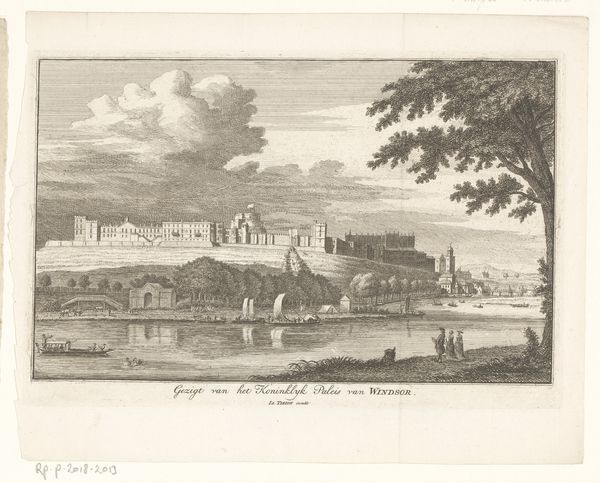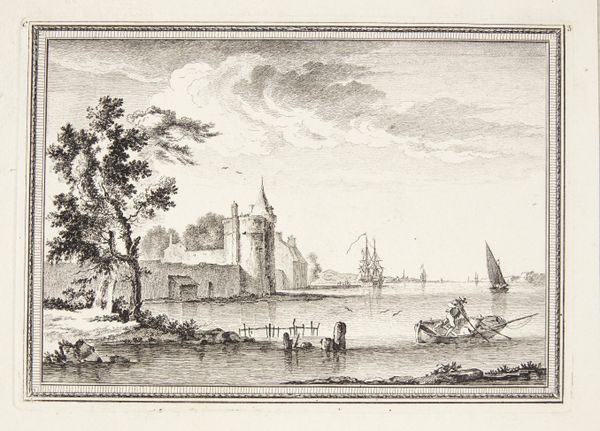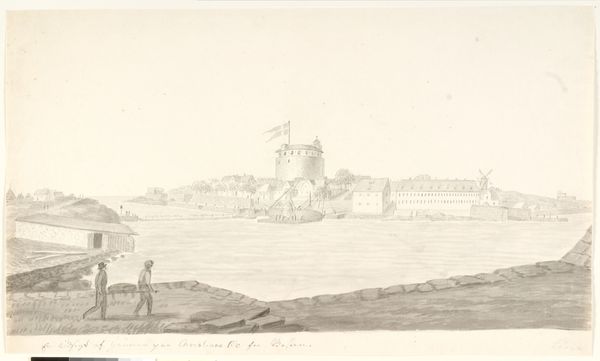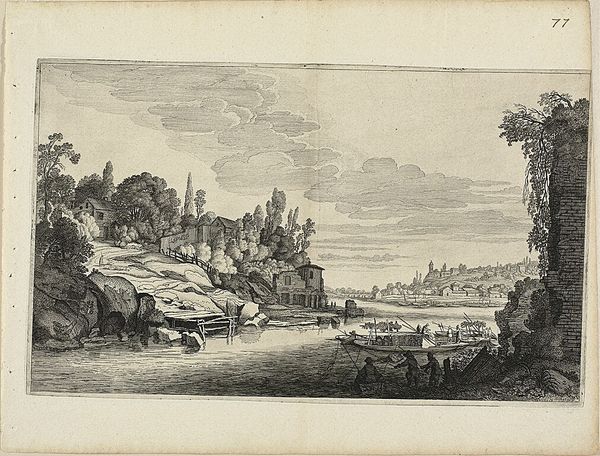
Dimensions: support: 256 x 375 mm
Copyright: CC-BY-NC-ND 4.0 DEED, Photo: Tate
Editor: So this is William Marlow's "Villeneuve-lès-Avignon," a watercolor piece. It feels like a captured moment of everyday life. What social context would have influenced this landscape? Curator: Marlow's work participates in a larger 18th-century trend of picturesque landscape depiction, often serving as souvenirs or status symbols for the British elite traveling abroad. How does the inclusion of local figures contribute to or complicate this dynamic, do you think? Editor: It almost feels staged, like the people are part of the scenery. Maybe it was a way for the British to exoticize the local culture while still maintaining a sense of control and ownership over the view. Curator: Precisely. The picturesque aesthetic here isn't just about beauty; it's intertwined with the social and political gaze of the time. Editor: That’s a really interesting point, it shifts my view of the piece entirely. Curator: Indeed, considering the historical and social context allows us to see beyond the surface level of visual appeal.
Comments
tate 8 months ago
⋮
http://www.tate.org.uk/art/artworks/marlow-villeneuve-les-avignon-t08209
Join the conversation
Join millions of artists and users on Artera today and experience the ultimate creative platform.
tate 8 months ago
⋮
Although some travellers to Italy at this date chose to make the voyage mainly by sea, many others selected a route overland. One of these routes took the traveller southwards through France, via Paris and the Sâone and Rhône valleys. This was clearly the route followed by William Marlow on his trip to the continent between 1765 and 1766. On his return to England, Marlow produced many versions of his Italian and French landscapes (both in watercolour and in oils). They served as 'souvenir' pictures for those who had made the grand tour. In the foreground of this watercolour are two of the ruined piers of the medieval bridge of St Benézét, the so-called 'Pont d'Avignon' immortalised in the song of the same name. Gallery label, August 2004
